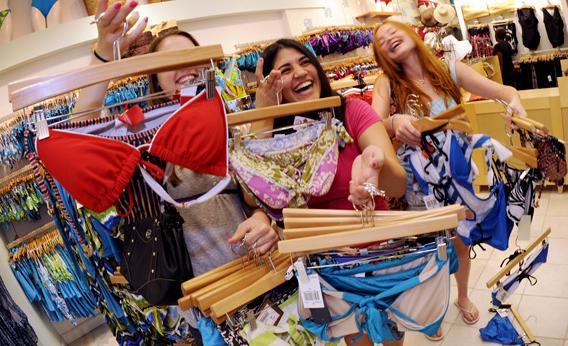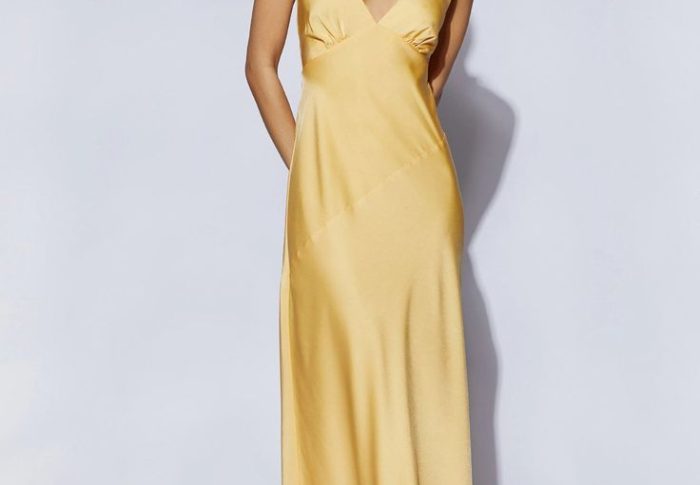Why Are Swimsuits So Expensive?

Photo by Sarah L. Voisin/the Washington Post/Getty Images
For American women, this is a summer ritual: walk into a clothing store, pull a playful swimsuit from a large group of brightly colored cousins, turn over the price tag – then hurriedly return the clothes to the hanger to avoid it Automatically recharge to your credit card. The price of women’s swimwear – the unification of summer holidays and the sultry afternoon of the pool – can easily reach $100 or higher, even in shops that are not on Rodeo Drive. How can a small amount of fabric squares, strings and buttons get such a huge amount of income?
Although women’s swimwear is rare, their swimwear is a complex garment whose price is related to global manufacturing, seasonal retailing, and the complexity of various activities and body designs.
“Building a simple swimsuit is as complicated as making a piece of clothing,” says Nancy Stamford, a professor of fashion goods at Kent State University. Designers must drive the latest trends while carefully considering fit: A survey by the NPD Group shows that women’s comfort, style, quality and price when buying swimwear have improved. Ideally, the swimsuit will compress some places while revealing other places. It won’t ride, nor will it loosen during the first wave or when jumping off the springboard – all of which makes the wearer feel comfortable and confident. “Because customers wear less, they are more critical of their bodies. Karla Colletto Swimwear swimwear designer Karla Colletto says we are making a small canvas, so creating a feelful, innovative and stylish suit. Challenging.
Another reason why swimsuits are expensive? They are very flexible. Stretchable fabrics that changed women’s swimwear in the 1960s were more expensive than many other materials, including the sturdy nylon or cotton used in men’s swimwear. In addition, manufacturers need special machines to handle similar fabrics commonly found in spandex, lycra and women’s swimwear.
Swimwear materials are also expensive because it requires a lot. These fabrics and other swimwear components, such as steel rings, must withstand a wide variety of elements – water, chlorine, sand, salt, sunlight and activity. “It’s also important that the style looks great because the project is technically stable and can withstand swimming, sunbathing, etc.,” said Samara Fetto, head of the swimwear division of online retailer ModCloth.
The relatively short time spent on swimsuits on store shelves also contributes to the rise in clothing prices. Peak customer demand is limited to a few months of the year, so it takes less time for designers to produce clothing overseas and send it back to the US. A tight schedule and smaller orders means they get less manufacturing discounts. The designer’s output is only a small part of the blockbuster branded products, and they pay more for the production of limited edition clothing – for example, Colletto takes unusual steps to make suits at her factory in Vienna, Virginia, to avoid trouble. Overseas manufacturing costs are high.
While seasonality may bring some extra cost to the price of your new bikini, it’s not as hard to find an off-season suit as it used to be. Buying a swimwear used to go to a department store sometime between the last snowfall and the first air conditioner, but the increase in online shopping made swimwear a year-round adventure. Online retailers can sell bikinis to Australians planning a beach vacation, while Americans are storing winter jackets and snow boots. Web-based stores can also offer more sizes, especially sizes. “The large size swimwear at ModCloth is a huge growth opportunity and we have seen great success,” says Fetto. Unfortunately, for consumers, longer shopping seasons and larger sizes have not translated into lower prices.
But swimwear, such as swimming itself, has long been democratic, said Christine Schmidt, author of The Swimsuit: Fashion From Poolside to Catwalk. Just as you don’t need to travel to the French Riviera to escape the heat, you don’t need to empty your savings account and change to a suit that feels like a million dollars. In the 1920s, you can make swimsuits at home from patterns purchased at the store, or you can buy a suit from one of the newly created French elite fashion designer collections. Today, the swimwear industry – a business with an annual turnover of $ 3.5 billion, according to the NPD Group, women’s swimwear accounts for 70% of the market share – is full of competition. Retailers like Target and H&M sell low-cost alternatives, even the most basic suits – small black bikinis – in Victoria’s secret retail double or Dolce & Gabbana labels ten times. More competition leads to lower prices – more excuses to wander around the pool. Just don’t forget the sunscreen.





-
-
6 months
Tagged fashion, Outfits, women